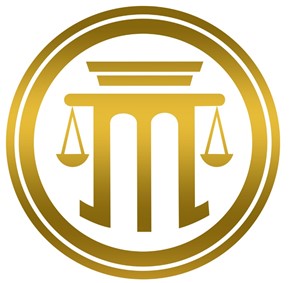Is an E document legal? We shall discuss this as our topic. The place we live in is an e-world. As of April 2022, Statista study reveals there were more than 5 billion internet users in the world; that is 63.1 percent of the entire human population. And out of the more than 5 billion, 4.7 billion were social media users.
More likely than not, our regular day would not pass without a coffee ordered via a food app, or money transferred online, or an email sent, or a document faxed, or a zoom meeting attended, or a message sent through an online messaging app, or a status posted on a social media platform.
Our correspondences, may they be on a personal or professional level, are now all electronic. This major change in the transaction landscape of the global populace made it necessary for the Philippine Congress to keep our laws abreast with the changing times.
In June 2000, then Pres. Joseph Estrada signed into law Republic Act No. 8792, “An Act Providing for the Recognition and Use of Electronic Commercial and Non-Commercial Transactions, Penalties for Unlawful Use Thereof, And Other Purposes, or more popularly known as the “Electronic Commerce Act of 2000.”
This law depicts how the State recognizes such indispensable role of information and communications technology (ICT) in nation-building.
It is the goal of the E-Commerce law to facilitate both domestic and international dealings, transactions, arrangements agreements, contracts and exchanges and storage of information through the utilization of electronic, optical, and similar medium, mode, instrumentality, and technology.
The Congress understands and foresees circumstances where there is a necessity to recognize the authenticity and reliability of electronic documents related to such activities and to promote the universal use of electronic transactions in the government and the public.1
Is an E Document legal?
It would depend on how the same is used. To be considered a legal document, it must also be properly authenticated, either electronically or otherwise. It may be considered a legal document, with the same status as a physical document, if it is verified, such as by being electronically signed.
Under RA 8792, it provides that Electronic documents shall have the legal effect, validity or enforceability as any other document or legal writing.2 Similarly, electronic signatures may have the same legal status as handwritten signatures under certain evidence rules or statutes.
An electronic signature on the electronic document shall be equivalent to the signature of a person on a written document if the signature is an electronic signature and proved by showing that a prescribed procedure, not alterable by the parties interested in the electronic document.3
Electronic signatures have the same legal weight and efficiency as handwritten signatures and paper documents in other industrialized countries. Although the laws may differ, the net effect may be the same.
The World of E-Commerce
Electronic commerce or more commonly known as e-commerce refers to the internet-based industry of buying and selling products or services via electronic means.
The e-commerce industry utilizes a combination of internet technology, mobile commerce, electronic funds transfers, escrowing services, electronic data interchange, supply chain management, inventory management systems, internet marketing, data collection systems, and many other technologies and innovative business systems.4
The common denominator of all these transactions is the internet. And the transactions in the e-commerce industry are vast, fast, and pervasive. Drawing and furnishing contracts, payments, orders, supply inventories, and deliveries—all done electronically, are just a few dealings taken advantage of by most of us.
The application of the Philippine E-commerce Law
The law covers any kind of ‘electronic data message’ and ‘electronic document’ used in the context of commercial and non-commercial activities to include domestic and international dealings, transactions, arrangements, agreements contracts and exchanges and storage of information.5
It must be noted that the sphere of application of the law is not limited to commercial activities. This nonrestrictive application of the law would benefit even those individuals whose dealings and transactions are purely personal. One does not have to discuss business contracts just for this law to apply to him; a personal email sent to a friend, or a family can be verily subject to the e-commerce law.
The ‘data message’ referred to in this law is information generated, sent, received, or stored by electronic, optical, or similar means. Meanwhile, ‘electronic document’ means any information or the representation of information, data, figures, symbols, or other modes of written expression, described or however represented, by which a right is established, or an obligation extinguished, or by which a fact may be prove and affirmed, which is received, recorded, transmitted, stored, processed, retrieved, or produced electronically.6
The terms ‘electronic data message’ and ‘electronic document’ are interchangeable. In the case of MCC Industrial Sales Corporation vs. SsangYong Corporation, the Court explained how these two terms are somewhat treated alike.
The clause on the interchangeability of the terms `electronic data message’ and ‘electronic document’ resulted from the Philippine Senate’s adoption, in Senate Bill 1902, of the phrase ‘electronic data message and likewise, the House of Representatives’ usage, in House Bill 9971, of the term ‘electronic document.’
To hasten the reconciliation of the two versions, the technical working group of the Bicameral Conference Committee adopted both terms and intended them to be the equivalent of each one.7
For the Court, however, there is a slight difference between the two terms. ‘Data message has reference to information electronically sent, stored, or transmitted, it does not necessarily mean that it will give rise to a right or extinguish an obligation, unlike an electronic document. But the Court concluded that still, the legislative intent to give these two terms similar treatment, is apparent.
Also worth mentioning is that A.M. No. 01-7-01-SC or The Rules on Electronic Evidence, expressly provided that the term ‘electronic document’ may be used interchangeably with ‘electronic data message’.
‘Electronic data message’ does not include facsimile transmissions
The Supreme Court explains that ordinary facsimile transmissions, which have an original paper-based copy as sent and a paper-based facsimile copy as received, could not have been included in the contemplation of the law.8
This is because in this kind of facsimile transmissions, there exists an original paper-based information or data that is scanned, sent through a phone line, and re-printed at the receiving end.
The intention of the Congress in passing the Electronic Commerce Act of 2000 is for virtual or paperless writings to be functional equivalent and to have the same legal function as paper-based documents.
In Garvida vs. Sales, Jr.,9 as the Court explained the unacceptability of filing pleadings through fax machines, it was pronounced:
“A facsimile or fax transmission is a process involving the transmission and reproduction of printed and graphic matter by scanning an original copy, one elemental area at a time, and representing the shade or tone of each area by a specified amount of electric current.10
“The current is transmitted as a signal over regular telephone lines or via microwave relay and is used by the receiver to reproduce an image of the elemental area in the proper position and the correct shade. The receiver is equipped with a stylus or other device that produces a printed record on paper referred to as a facsimile.”10
In fine, the Court passed that a fax is not a genuine and authentic pleading. Instead, it is an exact copy preserving all the marks of an original. Absence of the original would make it impossible to adjudge if it is the bona fide and original document.
In a stunning contrast, the Congress contemplated upon drafting the law, that in the virtual and paperless environment, there is no original copy to speak of, because all direct printouts of the ‘virtual reality’ are the same and are considered as originals.
In addition, it shall be noted that the law covers computer-generated fax or e-fax, which is a more recent technology. Needless to mention how e-fax differs from an ordinary fax— it allows faxing documents (which are the virtual and original) directly from any computer program.
The Philippine Courts accept E-Documents as Evidence
Do Philippine courts accept electronic data messages, electronic documents, and electronic signatures? The answer is an astounding yes! This is after all the most salient feature of the E-Commerce Act of 2000.
For electronic documents to be accepted as evidence in court means that these e-documents are granted legal recognition. And legal recognition means possessing legal effect, validity or enforceability as any other document or legal writing.
Prior to the enactment of an e-commerce law, the offering of a document as evidence in court is solely governed by Rule 130 or the Admissibility of Evidence of The Rules of Court.
The Best Evidence Rule particularly exacts that when the subject of inquiry is the contents of a document, no evidence is admissible other than the original document itself except in the circumstances provided in Section 3, Rule 130 of the Revised Rules of Court.11
At present, The Rules on Electronic Evidence, drafted by the Committee on the Revision of the Rules of Court a year after the passage of the E-Commerce Act, provides for the conduct of admitting electronic documents as evidence in legal proceedings. Electronic documents now enjoy the status of written documents. They cannot be discriminated for being mere e-documents.
Section 6 of the E-Commerce Act stressed that the legal recognition of electronic data message means that no information shall be denied legal effect, due to validity or enforceability concerns solely because it is in the data message. As mentioned, Section 7 states that electronic documents shall have the legal effect, validity or enforceability as any other document or legal writing.12
Electronic document is equivalent to original document
It must be stressed that for evidentiary purposes, an electronic document shall be the functional equivalent of a written document under existing laws.
This translates that whenever a rule of evidence refers to the term writing, document, record, instrument, memorandum or any other form of writing, such term shall be deemed to include an electronic document.13
Electronic documents are not like any special documents; they are precisely writings, just processed through electronic, optical, or similar means.
Moreover, under the Best Evidence Rule, an electronic document shall be regarded as the equivalent of an original document if it is a printout or output readable by sight or other means, shown to reflect the data accurately.14
The E-commerce Act even speaks of a caveat about the admissibility and evidential weight of electronic data messages or electronic documents in court.
The same E-commerce Act forewarns that in any legal proceedings, nothing in the application of the rules on evidence shall deny the admissibility of an electronic data message or electronic document in evidence on:15
- The sole ground that it is in electronic form; or16
- The ground that it is not in the standard written form, and the electronic data message or electronic document meeting, and complying with the requirements under Sections 6 or 7 hereof shall be the best evidence of the agreement and transaction contained therein.16
How about screenshots?
Double side click and voila, you got a duplicate of an e-document for your own storing and keeping. Screenshot or screencap, short for screen capture, allows people to have a copy of whatever is on their phone screen for later reference or use. Its counterpart on computers is a print screen.
Screenshots of photos, chat messages, or online posts are admissible as evidence in court proceedings, them being electronic documents. Just in a recent decision released by the Supreme Court, it sustained the conviction of the defendant for violation of R.A. No. 9775 or The Anti-Child Pornography Act, with the screenshots of his messenger conversations with the victim.
In introducing electronic documents, whether it is a screenshot or not, its authenticity must be proved. The party who seeks to introduce an e-document bears the burden of proving that it is indeed authentic. The Rule provides the following means to authenticate e-documents:
- Proved that it had been digitally signed by the person alleged to have signed the e-document;17
- Proved that other appropriate security procedures or devices as may be authorized by the Supreme Court or by law used to the e-document; or18
- Proved by other evidence showing its integrity and reliability to the satisfaction of the judge.18
Conclusion
What does it mean for our courts to open its evidence vault to electronic documents? It means progress for our justice system. It means that our Congress is sensitive to the necessities of our changing times. It means that our court proceedings are abreast with best practices in the legal world.
It means ease for people because the allowance of the e-documents as evidence makes their access to justice simple and undemanding. The E-commerce Act keeps people assured that in any case their electronic transactions will yield any legal concerns, they have recourse to law—a simplified and accessible one.
- Section 3, Republic Act [RA] No. 8792, June 14, 2000[↩]
- Section 7, RA 8792[↩]
- Section 8, RA 8792[↩]
- E-Commerce Law [Primer][↩]
- Section 4, RA No. 8792, June 14, 2000[↩]
- Section 5, RA No. 8792, June 14, 2000[↩]
- MCC Industrial Sales Corporation vs. SsangYong Corporation, G.R. No. 170633, October 17, 2007[↩]
- Ibid.[↩]
- G.R. No. 124893, April 18, 1997[↩]
- Ibid.[↩][↩]
- Spouses Tapayan vs. Martinez, G.R. No. 207786, January 30, 2017[↩]
- Supra.[↩]
- Section 1, Rule 3, A.M. No. 01-7-01-SC[↩]
- Section 1, Rule 4, A.M. No. 01-7-01-SC[↩]
- Section 12, RA 8792[↩]
- Id.[↩][↩]
- Section 2, Rule 5, A.M. No. 01-7-01-SC[↩]
- Id.[↩][↩]


